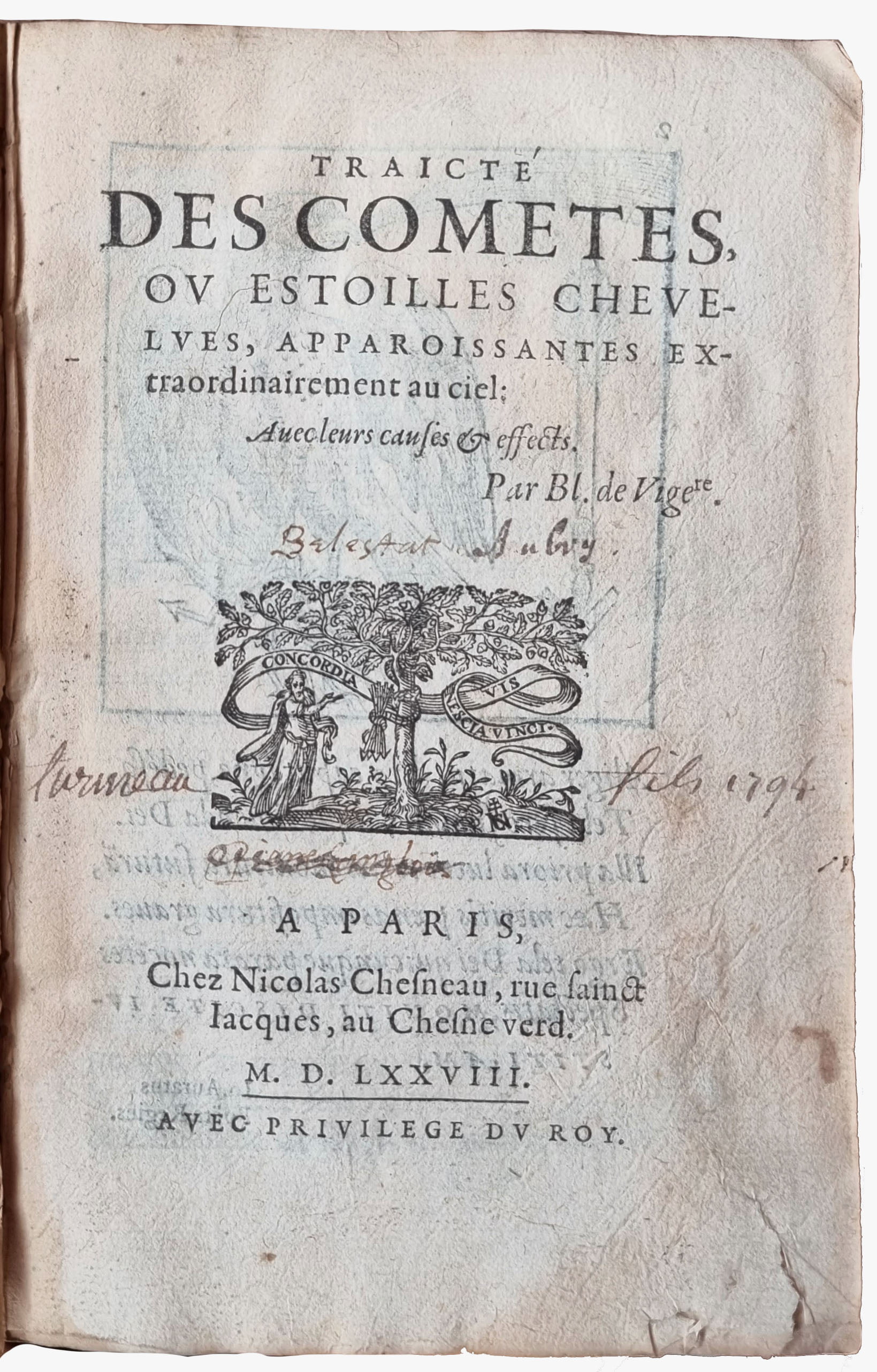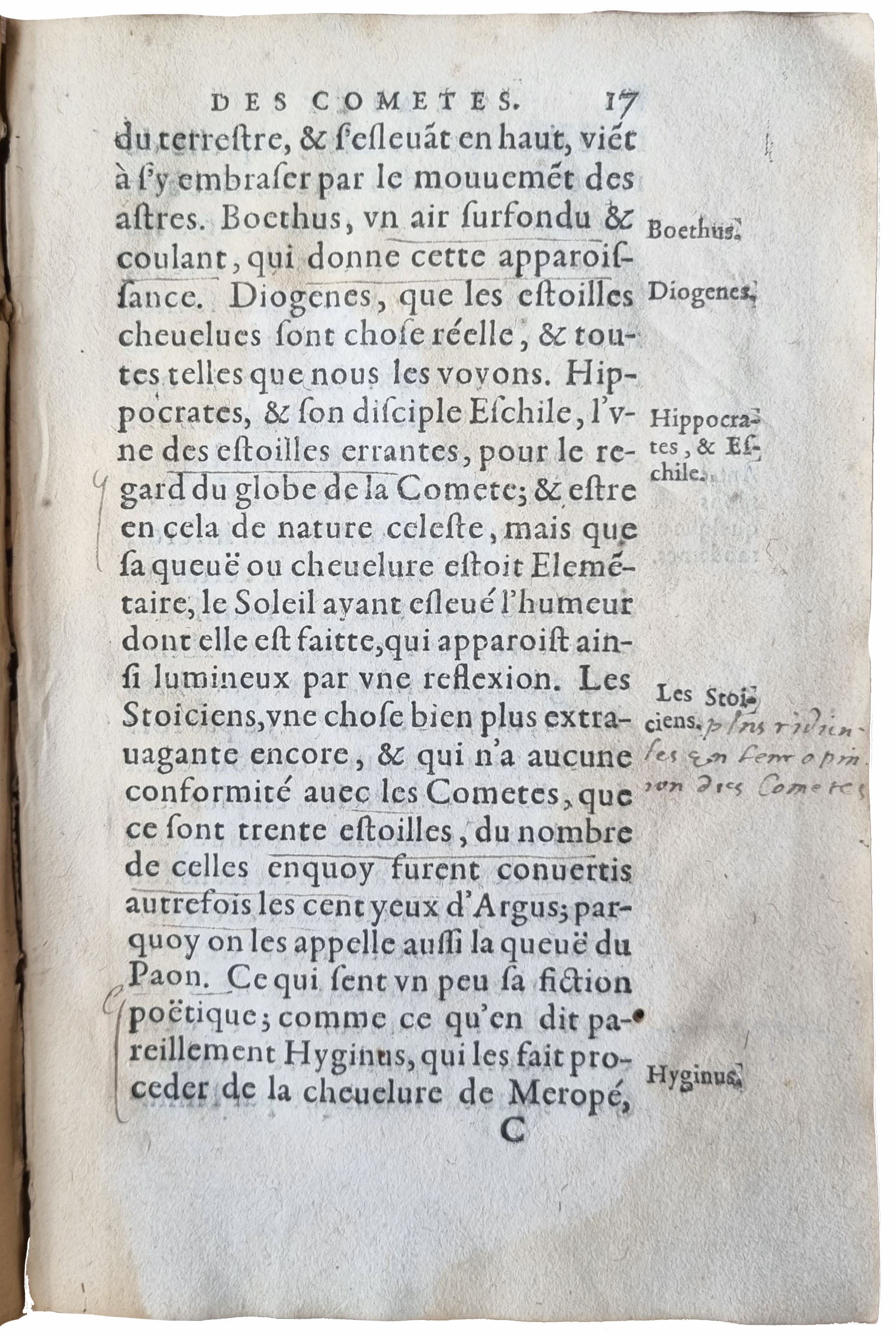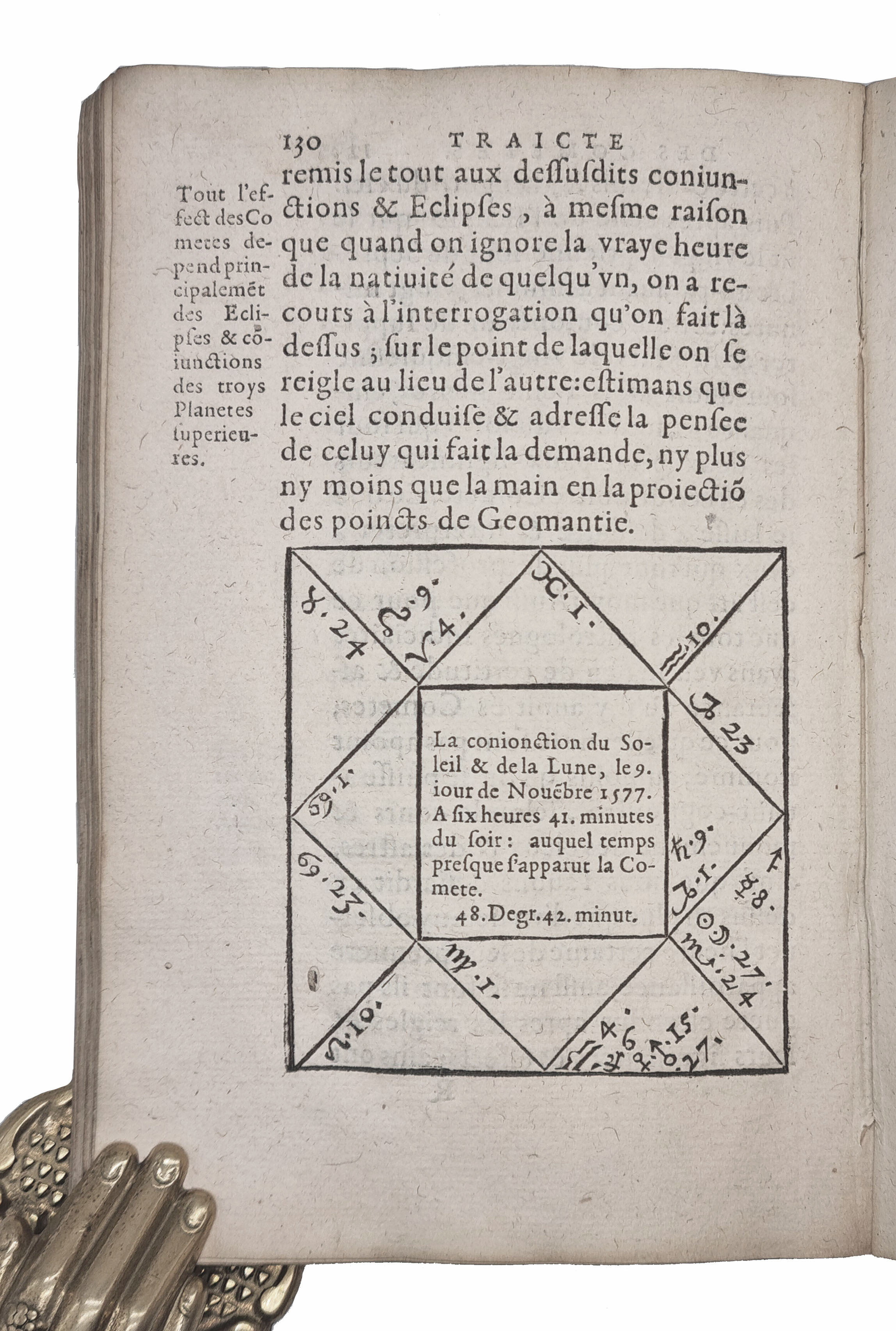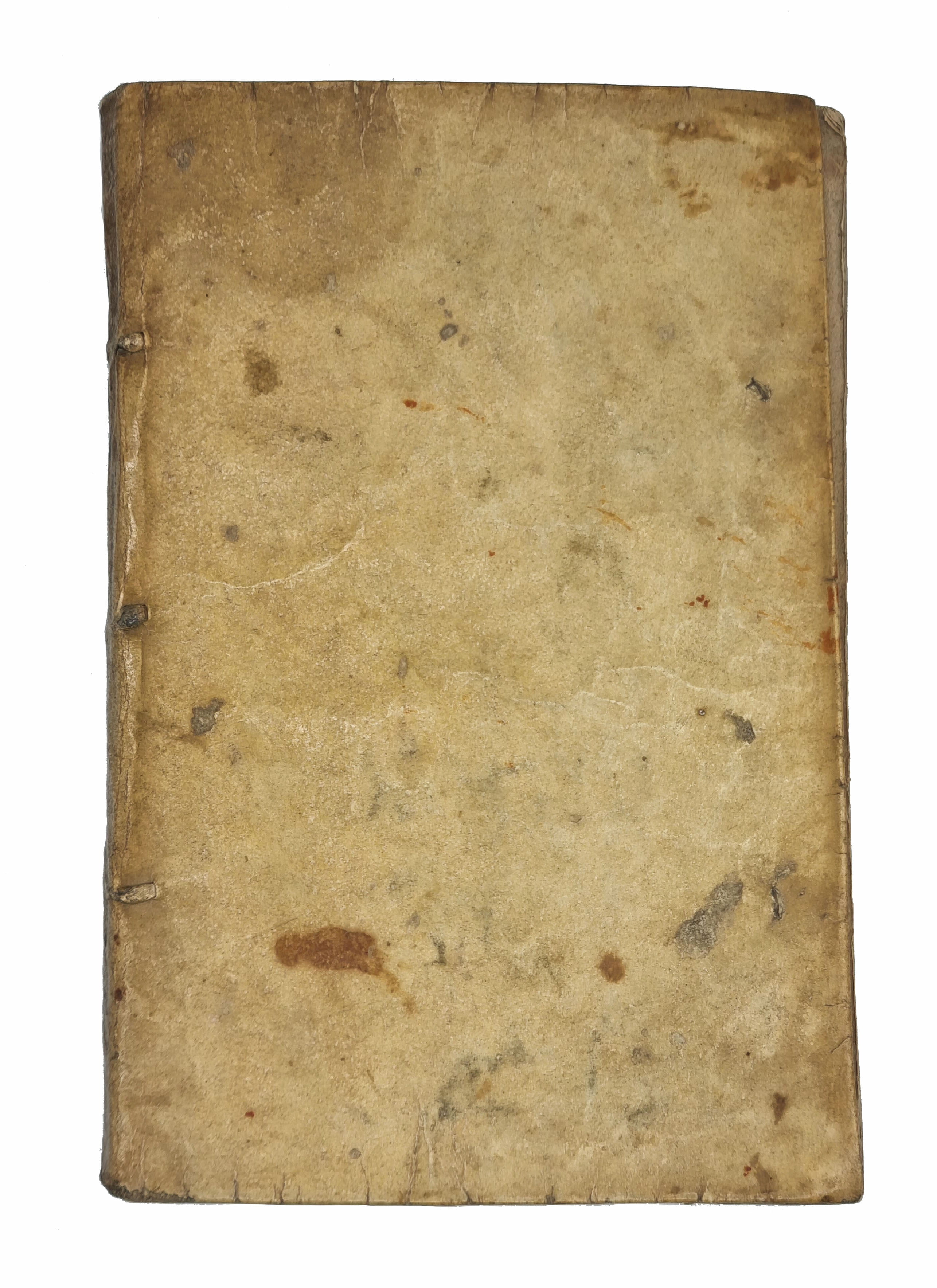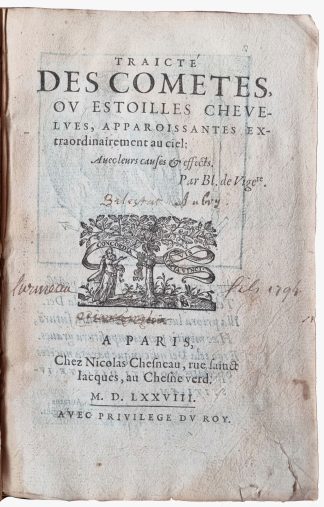VIGENÈRE, Blaise
ON COMETS - RARE AND ANNOTATED
Traicté des cometes, ou estoilles chevelues, apparoissantes extraordinairement au ciel …
Paris, chez Nicolas Chesneau rue Saint Jacques, au chesne verd, 1578£3,950.00
FIRST EDITION. 8vo. (in fours). pp. 171, [i]· A-X⁴ Y². Roman letter, some Italic and Greek. Small woodcut printer’s device on title, woodcut emblem of a comet on verso, three woodcut astrological tables, ‘Selestat Auboy’ in a contemporary hand on t-p ‘Luraneau fils 1794’ below, many contemporary marginal annotations and underlinings in a very legible hand. Light age yellowing, single worm holes in blank outer margin, becoming a marginal trail in quires K and L, light waterstaining in first few quires, tear to blank outer corner of t-p A very good copy, with good margins in contemporary limp vellum, holes for ties.
Rare and important first edition of this most interesting and influential work on comets by Blaise de Vigenere, (1523–1596) a French diplomat, cryptographer, translator and alchemist. The work has been extensively annotated by a contemporary scholarly owner, whose views were sceptical as to the ability of people to predict the future based on astral events. The author was a renowned scholar, translator and commentator, on among other things, Jerusalem Liberated by Tasso and on Filostrato’s works. He was also an innovative cryptographer, and a keen investigator of natural and celestial phenomena. This work was written on the occasion of the passage of the famous comet of 1577, in which he makes an effort to formulate astronomical assessments, compatible with the science of his time. Vigenère assumes a somewhat ambiguous attitude in relation to astrology; on the one hand, he states that it is not given to men to practice the art of divination, and on the other he writes that in numerous cases the passage of comets do coincide with negative events, mainly related to princes and kings.
“European thought, which New England followed, had at last broken away in great measure from the theological view of comets as signs and wonders. The germ of this emancipating influence was mainly in the great utterance of Seneca; and we find in nearly every century some evidence that this germ was still alive. This life became more and more evident after the Reformation period, even though theologians in every church did their best to destroy it. The first series of attacks on the old theological doctrine were mainly founded in philosophic reasoning. As early as the first half of the 16th century we hear Julius Caesar Scaliger, protesting against the cometary superstition as ‘ridiculous folly’. Of more real importance was the treatise of Blaise de Vigenère, published at Paris in 1578. In this little book various statements regarding comets as signs of wrath or causes of evils are given, and then followed by a very gentle and quiet discussion, usually tending to develop that healthful scepticism which is the parent of investigation.” Andrew D. White ‘A History of the Warfare of Science with Theology in Christendom.’ “Although a vocal minority espoused the theory that comets were the proximate causes of catastrophic events, most authors in the 15th, 16th, and 17th centuries denied outright comets were causal. For example, in 1578 Blaise de Vigenère, a French author and court official, rejected the theory that ‘comets menace great princes and kings with death because they live more delicately than other people; especially as the air is impregnated and thickened by a comet’s impression, such that it is more harmful and dangerous to them than it would be to a labourer or scoundrel who lives on coarser food’ because he observed that many people indulged their appetites for delicacies yet remained unharmed by comets.” Sara Schechner. ‘Comets, Popular Culture, and the Birth of Modern Cosmology’.
A very good copy of this extremely rare work, with interesting contemporary annotations.
Cantamessa 8401. Dorbon 5130 ‘excessivement rare.’ Caillet III 11162. Grassi p. 710. Not in Houzeau and Lancaster.In stock


